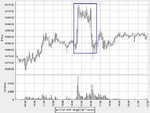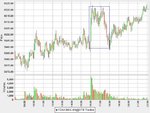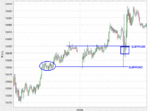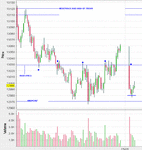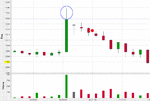firewalker99
Legendary member
- Messages
- 6,655
- Likes
- 612
In this thread I'll discuss why traders don't need to study anything other than a chart. I will show you that every news item, corporate report, monetary decision, in short anything fundamentally related to the economic situation of a stock or market, is printed on the chart first, long before the public becomes aware of it.
The tape tells the news minutes, hours and days before the news tickers, or newspapers, and before it can become gossip. Everything from a foreign war to the passing of a dividend; from a Supeme Court decision to the ravages of the boll-weevil* is reflected primarily on the tape. -- Richard Wyckoff
Undoubtedly people will tell me this can't be true, otherwise why would we have market analysts? Why would the newspapers print financial pages? The purpose of this thread is to inform, not to convince any disbelievers. All you need, is painted in the chart. Several concrete examples will be shown to support my case. The topic is open for discussion, but I hope this thread can become more than an evocation of "this is my opinion" posts. If you feel strongly about something, back up your point of view with some arguments.
Here's to the wonders of the chart 🙂
The tape tells the news minutes, hours and days before the news tickers, or newspapers, and before it can become gossip. Everything from a foreign war to the passing of a dividend; from a Supeme Court decision to the ravages of the boll-weevil* is reflected primarily on the tape. -- Richard Wyckoff
Undoubtedly people will tell me this can't be true, otherwise why would we have market analysts? Why would the newspapers print financial pages? The purpose of this thread is to inform, not to convince any disbelievers. All you need, is painted in the chart. Several concrete examples will be shown to support my case. The topic is open for discussion, but I hope this thread can become more than an evocation of "this is my opinion" posts. If you feel strongly about something, back up your point of view with some arguments.
Here's to the wonders of the chart 🙂

